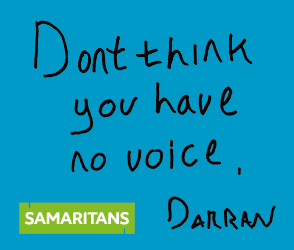inside man wrote:
Thanks rob but it will not open on my iPhone properly.
TOWN AND COUNTRY PLANNING ACT 1990
CALLED IN APPLICATION BY YORKCOURT PROPERTIES LTD
LAND ADJACENT TO NEWMARKET LANE, ROTHWELL, WAKEFIELD
LOCAL PLANNING AUTHORITY: WAKEFIELD METROPOLITAN DISTRICT
COUNCIL
NOTES OF PRE-INQUIRY MEETING
Held on Monday 26 September 2011 @ 1000 hours in Old Restaurant, Town Hall, Wood
Street, Wakefield.
1. Inspector’s Opening Points:
After welcoming those attending the Pre-Inquiry Meeting the Inspector explained that the
aim was to discuss the procedural and administrative arrangements relating to the Inquiry
and to confirm the timetable for the submission of proofs of evidence and also a
programme for hearing the cases of the various parties appearing at the Inquiry.
2. Identity of the various parties to the Inquiry
The Applicant will be represented by Mr Andrew Piatt, Partner for HBJ Gateley Wareing
(Manchester) LLP. He expects to call 5/6 witnesses.
Wakefield MDC will be represented by Mr Jonathan Easton of Counsel. Wakefield MDC
expects to call 5 witnesses.
The Rule 6 party, Leeds City Council, would be represented by Mr Alan Evans of
Counsel. Leeds City Council expects to call 2 witnesses.
3. Appointment of Programme Officer
The Inspector explained that it would greatly assist him if the Council could provide a
Programme Officer for the duration of the Inquiry. He said it would be helpful if the
person chosen had some knowledge of Inquiry procedures but must have had no direct
involvement in this case. The person appointed would act as an impartial officer of the
Inquiry and would be directly responsible to the Inspector. The main tasks of the
Programme Officer would be:
· to act as liaison officer for all participants;
· to organise the Inquiry programme; and
· to ensure that all documents submitted to the Inquiry are recorded and circulated.
Mr Easton said he could not suggest anyone for the Programme Officer’s job at present
but he agreed to notify the Planning Inspectorate (Sarah Banwell) of the person chosen in
the next few days. There were no objections raised to the Inspector contacting the
Programme Officer before the opening of the Inquiry.
4. The Inquiry Programme
The Inspector said that a bespoke programme had been agreed for this Inquiry.
This
indicates that the Inquiry would last for 12 days. He asked the parties for information so
that he could assess whether this was a reasonable estimate. The Applicant considered
that 4-5 days should be sufficient to present its case including any cross examination. The
Council said that 3 days should be sufficient to present its case in total. It is anticipated
that 1.5 days would be needed to hear the Rule 6 party’s case, and 1.5 days to hear
representations from local residents and organisations, to prepare closing submissions
and to carry out site visits. The Inspector said that it appeared from the information given
that the Inquiry could be accommodated within the 12 days sitting time.
The parties indicated who they would be calling as witnesses and what topics each
witness would be covering. The parties would be calling witnesses to cover matters such
as planning, highways, regeneration, sport, ecology and viability. The Inspector indicated
that by 29 November 2011 the Planning Inspectorate should be notified of the final list
of the names of the advocates and where appropriate, instructing solicitors and the names
and professional qualifications of all the witnesses they propose to call. This requirement
applies to both main parties and the Rule 6 party. It would be helpful if the witnesses
were listed in the order in which they intend to be called. Please notify the case officer
via email
{sarah.banwell@pins.gsi.gov.uk}.
5. Inquiry procedures
The Inquiry is to be held at The Kingswood Suite, Town Hall, Wood Street,
Wakefield. This will be the venue for the whole of the Inquiry. The Council will ensure
that the venue is suitable for disabled access and that access to the Inquiry room is clearly
signed. The Inspector and the Applicant should be provided with a retiring room if
possible. These rooms and the Inquiry room should be locked in the evenings.
The Inquiry will start on Tuesday 6 December 2011. It would sit from 1000 hours to
about 1700 hours each day with a break of an hour taken at about 1300 hours for lunch.
Fridays may have an earlier close at around 1500 hours but will have the same opening
time unless otherwise agreed. The Inspector expressed the hope that it would be possible
for tea or coffee to be provided mid morning and mid afternoon as in his experience,
short breaks in the morning and afternoon help to make proceedings go more smoothly.
They are a good way of relieving tension and they provide an opportunity for informal
discussions to take place.
The Inspector said that the procedure to be adopted at the Inquiry would follow the
August 2000 Procedure Rules. He explained that after his opening announcements he
would invite the Applicant’s advocate to make a brief opening statement doing no more
than to outline the Applicant’s case (not exceeding 10 minutes in length). He would then
invite the Council’s advocate to do the same and then ask the Applicant’s advocate to call
each of his witnesses. There would be an opportunity for those opposing the Applicant’s
case to question the witnesses.
The Inspector said that when all of the Applicant’s witnesses had been called, he would
ask the Council’s advocate to put forward its case following the same process. Next it
would be the turn of the Rule 6 party, other parties and members of the public. The
Inspector indicated that he may ask questions at any time.
Following a session(s) when suggested conditions and obligations would be discussed,
the Inspector would invite closing submissions from other parties, the Council and the
Applicant in that order. Following the close of the Inquiry, the Inspector indicated that
he would carry out an accompanied site visit.
The Inspector reminded the parties that any planning obligation that is proposed must be
completed before the close of the Inquiry. The Inspector asked to be notified about any
planning obligations at the outset of the Inquiry. If appropriate he will deal with any
planning obligations in a separate session towards the end of the Inquiry.
6. Proofs of evidence
The Inspector indicated that in order that all the parties have sufficient time to read and
understand the evidence, he would like all proofs to be sent to the Planning Inspectorate
by Tuesday 8 November 2011. Rule 6 parties, other parties and written representations
are also asked to meet the 8 November 2011 date. Any Rebuttal proofs should be
submitted by no later than 29 November 2011.
The Inspector also reminded the parties that proofs over 1,500 words should be
accompanied by a summary of the main points to be given in evidence. Summaries
should be written at the same time as the proofs and be sent to the Inspectorate at the
same time, not provided later. To save time at the Inquiry, only summaries would be
read, but the main proof would be the basis for cross-examination. The aim should be for
the proof of evidence to be no longer than 3,000 words. Proofs of evidence should not
include matters which are not in dispute.
The Inspector indicated that he would need 2 copies of each proof of evidence and
summary; one for submission to the SoS and one for his own use at the Inquiry.
However, he only required one copy of any appendices and the core documents. A copy
of the proofs and documents should be available for each main party who intends to
participate in the Inquiry and a further copy should be available on the day of
presentation of any particular evidence for the use by interested persons. The Inspector
requested that documents, plans and photographs be bound separately from the proofs.
A list of Core Documents should be produced. To avoid possible confusion, it would be
helpful if a simple numbering convention was adopted for documents e.g. CD/1,
WMDC/1, APP/1.
7. Main Issues
From a preliminary look at the files, the Inspector indicated that he would like to see the
proofs of evidence covering the topics set out in the SoS call in letter i.e. A-I in the letter
dated 13 December 2010. It would assist reporting if the evidence was structured around
the matters set out in the call in letter.
In relation to the Green Belt issue the Inspector said it would be helpful to follow the
usual sequence of reasoning in Green Belt cases and work through the various stages:
(i) Is the development inappropriate?
(ii) If yes, what are the relevant material considerations?
3
For each one, consider:
(a) Which side of the balance should it be put?
• is it one which causes harm to the Green Belt or other matter?; or
• is it one which potentially weighs in favour of the development and could thus be
described as an ‘other consideration’?
(b) What weight should it be given?
(iii) The Green Belt balance: look at the balance as a whole; do the other considerations clearly
outweigh the totality of the harm?
(iv) If so, do very special circumstances exist?
8. Statement of Common Ground (SOCG).
The Inspector noted that the date for submission of the SOCG was 24 August 2011. It
was accepted that a draft had been prepared but a final version has not been agreed with
the Council. Both main parties agreed to expedite the submission of the SOCG as soon as
possible.
9. Other Procedural and Administrative matters
The application comprises “EIA development” by virtue of Regulation 4(2) (a) of the
Regulations1 and is accompanied by an Environmental Statement (ES). The ES has
already been assessed and further information required in relation to otters and water
voles. This information was requested pursuant to Regulation 19 of the EIA Regulations.
The Inspector indicated that he was currently considering all of the ES information in
relation to compliance with the Regulations. However, he pointed out that a conclusion as
to adequacy can only be reached after he has considered all the environment information,
including responses to the consultation on the environmental statement and evidence and
representations at the Inquiry stage. In other words, a settled position on adequacy cannot
be reached until all the evidence has been heard.
Closing submissions should be supplied to the Inspector in hard copy and on disc or
memory stick using MS word at the Inquiry venue. The Inspector indicated that he would
endeavour to make time within the programme to permit this. Closing submissions
should follow the topics set out in the SoS’s call in letter and should seek to provide a
summary of the case to be put to the SoS. The font to be used is Verdana 11 point. Please
note that all measurements should be in metric except mph for road traffic purposes in the
context of statutory speed limits. It was confirmed that photocopying and fax facilities
would be available at the Inquiry venue. No other procedural matters were raised and the
meeting closed at 1050 hours.
Harold Stephens
Inspector
26 September 2011














